White Oak
Quercus alba
While it may be challenging to tell some other oaks from each other, white oak is the easiest to identify, as its leaves are
light-colored (glaucous) on the underside and have blunt, rounded lobes without bristles—a character unique among the oaks
of southeastern Massachusetts. The bark on mature trunks often becomes strikingly light-colored, nearly white, which makes
white oak look so different from other forest trees that it can be recognized from the distance. As many other trees, white
oak develops a narrower crown and grows much taller in the forest than in the open, reaching up to 100 ft. As compared to
other oaks, white oak is extremely long-lived. Its valuable wood has been used for various woodwork, especially barrel-making,
hence its technical name: stave oak. Acorns of white oak ripen over the span of two years. They germinate in the fall, so
that the oak spends its first winter as a little sprout. This makes it more vulnerable as compared to red, black, scarlet,
or scrub oak, which postpone germination until spring. Over 100 species of birds and mammals feast on its sweet acorns, favoring
white oak over red, scarlet, black, and scrub, all of which have bitter acorns.
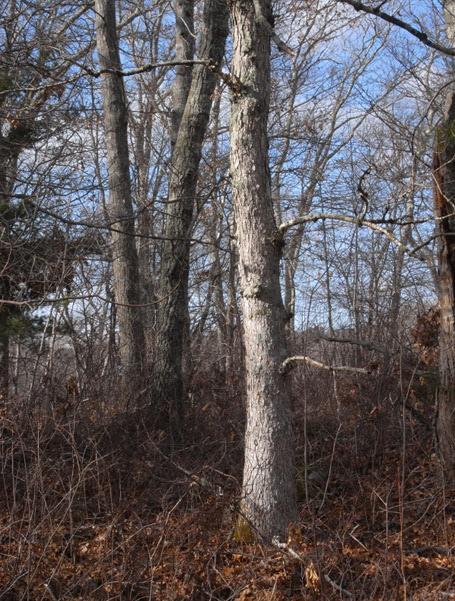
White oak is conspicuous in the forest due to its light-colored bark. Tidmarsh Sanctuary, Plymouth, March 10
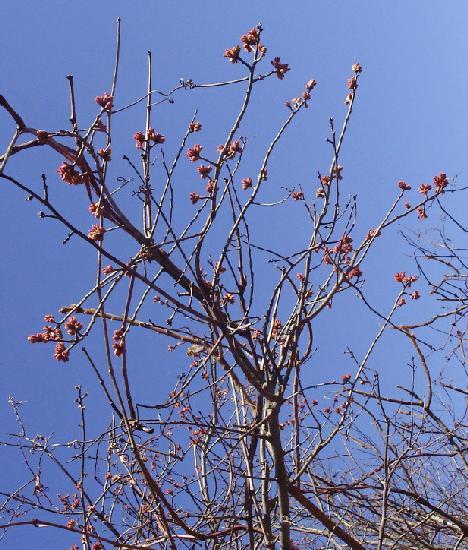
Emerging young leaves are colored dark red. Tidmarsh Sanctuary, Plymouth, May 2
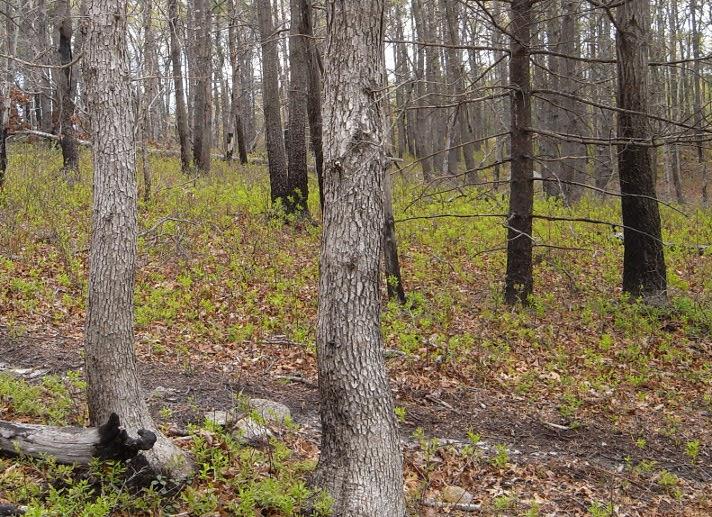
White oak is frequent in the fire-prone pine barrens. A recently burnt lot with huckleberry understory. Massasoit Wildlife
Sanctuary, Plymouth, May 11
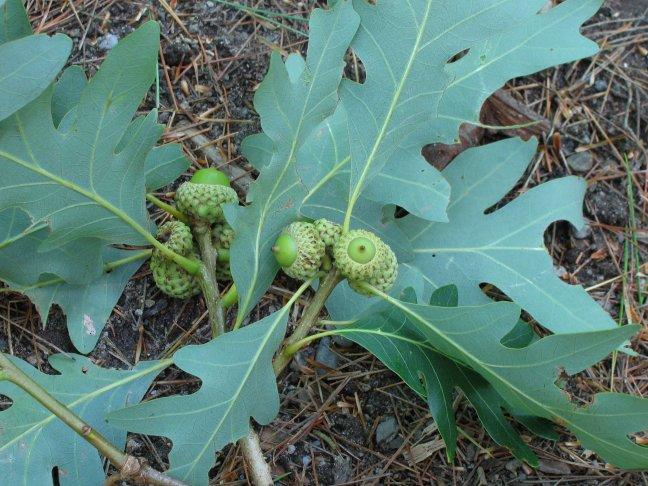
Leaves glaucous on the underside; first-year acorns. Freetown/Fall River SF, Fall River, August 18
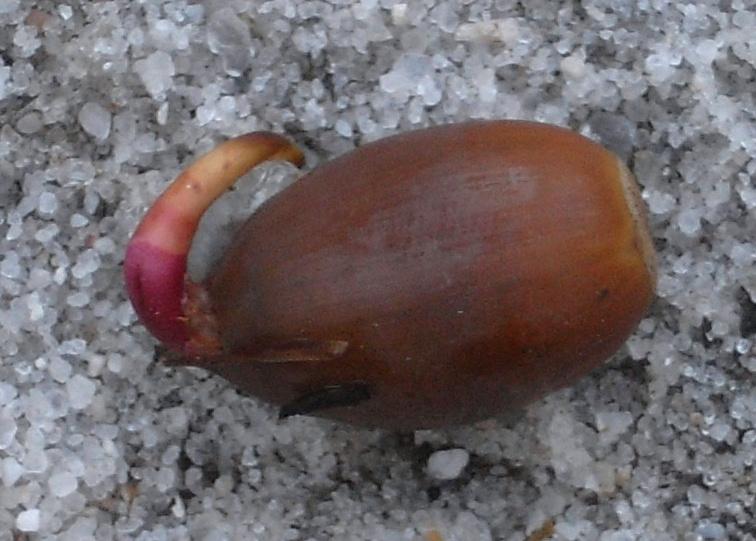
A germinating acorn. Myles Standish SF, Plymouth, October 13